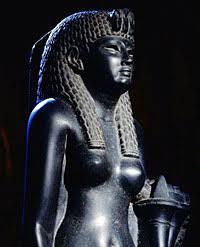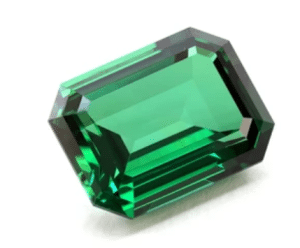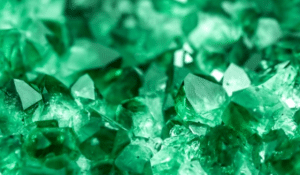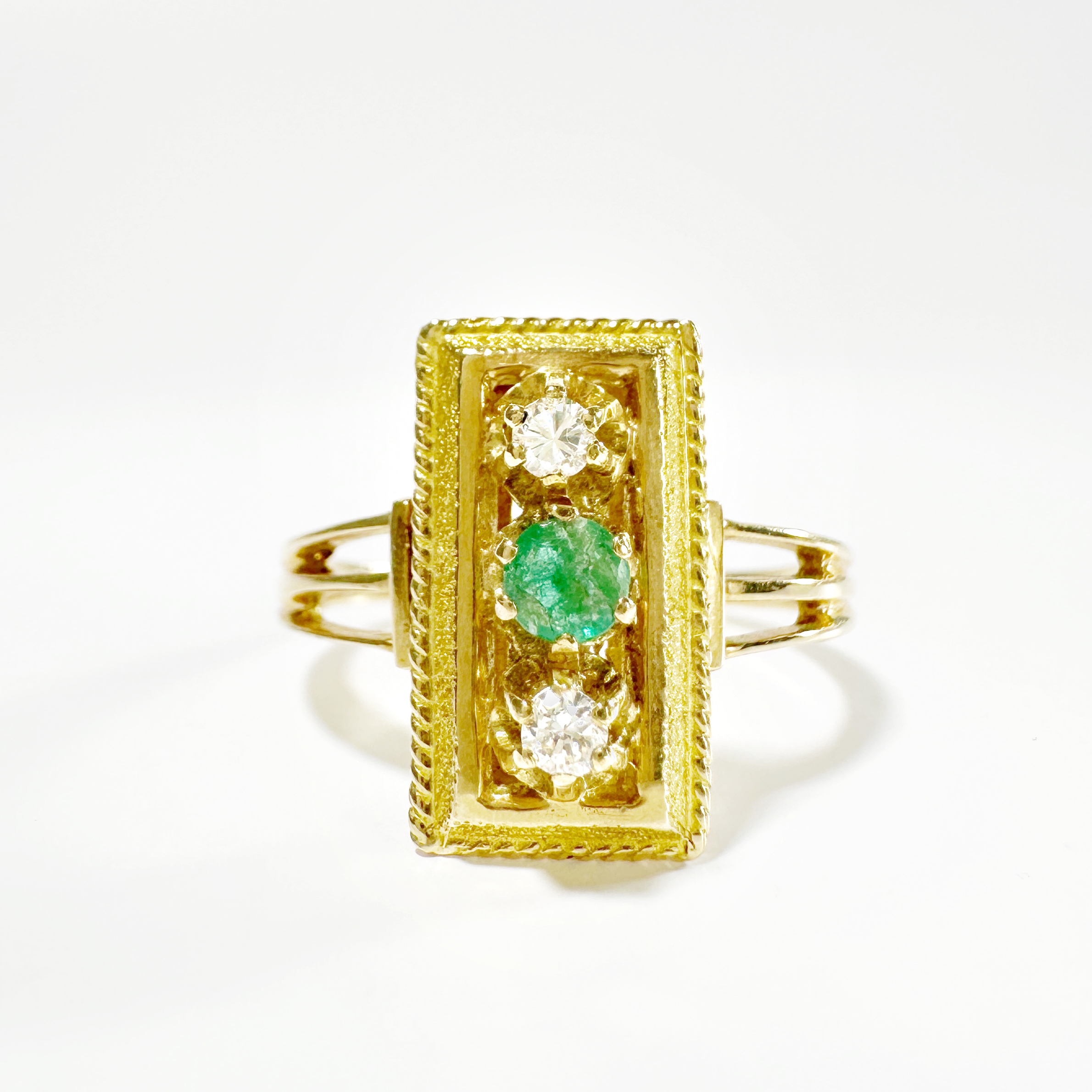 Feeding the imagination since ancient times by its captivating green color, emerald is one of the 4 precious stones, along with diamond, ruby and sapphire. Birthstone of May, it is characterized by many specificities that we will discover in this article.
Feeding the imagination since ancient times by its captivating green color, emerald is one of the 4 precious stones, along with diamond, ruby and sapphire. Birthstone of May, it is characterized by many specificities that we will discover in this article.
ORIGINS OF THE NAME EMERALD
If its name in Sanskrit means “the green of things that grow”, the gem under the name we know it today takes its roots in Greek etymology. The Greek “smaragdos” means “the green stone”. The Greek word “smaragdos”, meanwhile, comes from the Persian term “zamarat” which means heart of stone.
 HISTORY OF THE EMERALD
HISTORY OF THE EMERALD
Since ancient times, the green gemstone inspires with its lush green hue with subtle nuances.
The first traces of the May birthstone extraction date back 5000 years in Egypt. Cleopatra was known for her adoration of the green gem, which she collected. She owned the emerald mines of Egypt, named “Cleopatra’s Mines”, which were later exploited by Alexander the Great.
On another continent, from the middle of the sixteenth century, the conquistadors exploited the Colombian mines and were seduced by the brilliance and transparency of these gems.
The Incas already used the precious green gem in their jewelry and religious ceremonies. The popularity of the gem among the royalty of Europe and Asia began with Spanish trade. The latter, more fond of gold and silver than precious stones, exchanged green stones for precious metals.
Even if several other green gemstones exist, (Peridot, Tsavorite (green garnet), Tourmaline), none is as adored as emerald.
MAIN EMERALD DEPOSITS
 Despite the Egyptian roots of the green gem mentioned above, today, the main mines and deposits of the gem are not located in Egypt. Egyptian resources are depleted and the main mines of the green gem are in Russia, Zambia and Colombia. Moreover, Colombia is the world’s leading producer of the stone and its deposits are reknown for producing emeralds of exceptional quality.
Despite the Egyptian roots of the green gem mentioned above, today, the main mines and deposits of the gem are not located in Egypt. Egyptian resources are depleted and the main mines of the green gem are in Russia, Zambia and Colombia. Moreover, Colombia is the world’s leading producer of the stone and its deposits are reknown for producing emeralds of exceptional quality.
 EMERALD COMPOSITION
EMERALD COMPOSITION
The green gems is the most famous variety of the Beryl family, to which Aquamarine also belongs.
The particularity of the natural emerald is that it has micro-fractures called inclusions or, more poetically, “garden”. These defects give it its character and their absence is so rare that it can lead to question the authenticity of the stone. These micro-fractures are found in even the purest gems, which also makes it one of the most fragile gems.
The hardness of the gemstone is between 7.5-8 on the Mohs scale.
 THE EMERALD CUT, A VERY SPECIFIC SIZE IN JEWELRY
THE EMERALD CUT, A VERY SPECIFIC SIZE IN JEWELRY
In the world of jewelry, the emerald cut is a very specific gem cut of rectangular shape with oblique corners.
Whatever jewel is created to be set with a stone of this size, the lapidary must be vigilant when working the green stone, because of its fragility.
EMERALD CARE
 To maintain the brilliance of this fragile stone, the simplest and most natural tricks are to be preferred.
To maintain the brilliance of this fragile stone, the simplest and most natural tricks are to be preferred.
It is recommended to avoid contact with chemicals, and ultrasound baths is also not recommended for this stone. Indeed, in order to fill the inclusions of the stone, it is customary to oil them at the exit of the mine. By cleaning them thoroughly, you risk removing the oil from within the stone and making it dull and opaque.
A simple wash with soapy water will clean the stone without any risk. You can then polish it with cedar, sweet almond or sandalwood oil to make it brighter.
EMERALD SYMBOLISM
 On the psychic level, the green gemstone is a stone of wisdom and patience.
On the psychic level, the green gemstone is a stone of wisdom and patience.
Birthstone of May, it helps to strengthen friendship and romantic relationships, encouraging loyalty and sincerity.
For the Romans, the emerald is the stone of Venus, sometimes called “chastity stone“, which is troubled in case of infidelity.
The precious gem also symbolizes hope and renewal. It is said that its power doubles in the spring. Finally, the emerald wedding celebrates 40 years of marriage.
 en
en
 Français
Français



